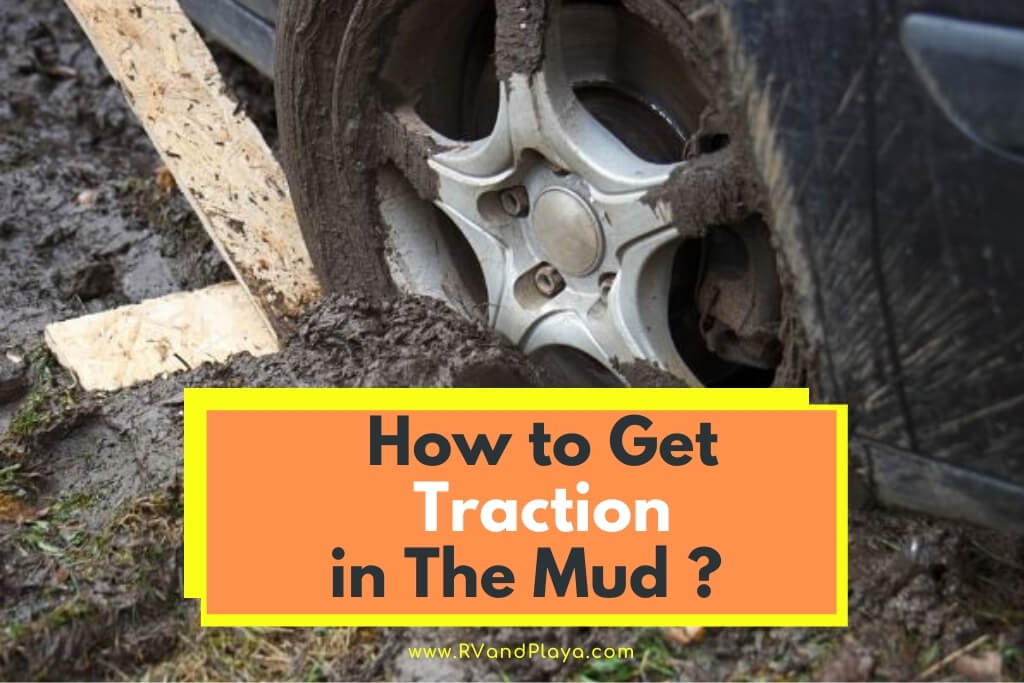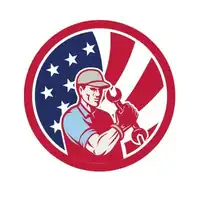Off-roading is a great adventure but not always of the positive kind. Sometimes you may find yourself underestimating the depth of a mudded area, and before you know it, you are spinning out and stuck.
So, how to get traction in the mud? To get traction in the mud you need to do the following:
- Assess the depth of the mud and potential obstacles in the area.
- Clear the tire area and path of debris and attempt to rock the vehicle from its position.
- Place material under the car’s driving wheels for purchase; if this fails, try a snatch recovery.
If you find your vehicle stuck in the mud, you need to explore your options before you might need to consider help.
If you have come to a halt and your wheels have no grip, here are several ways to get traction in the mud explained.
Table of Contents
Step out of Your vehicle and Inspect the Terrain
Before you spin yourself deeper into the muddy area, you will need to get yourself muddy. It would be best if you investigated the place where your vehicle has become lodged.
If you have passengers, ask them to climb out of the truck to reduce the vehicle weight to prevent your car from sinking further.
Stay calm and assess your situation and plan your strategy to extricate your vehicle. You should carefully check your path for potential obstacles such as rocks or embedded debris and gauge how deeply embedded your wheels are in the mud.
Once you understand your particular situation, you will be better informed on how to get the best traction to free yourself.
3 Redneck Ways to Get Unstuck when Wheeling Alone! – car stuck in mud help >> Check out the video below:
Rock Your Vehicle Forward and Back
Rocking is a traditional way of gaining traction, which sometimes gains enough purchase to get your forward momentum started again.
This move should be made without rapid accelerating and reversing, which will only get your vehicle stuck down further.
In a 4WD
- Switch into 4WD and lock your differential (if possible)
- Quickly downshift into reverse, then alternate between drive and reverse, rocking your vehicle back and forth.
- This action may provide the traction you need as you gradually increase the acceleration to help your rollout.
Read also: How to Drive in Mud with 2WD (Get Traction)
Without 4WD
- Alternate between forward and reverse and attempt to build up a momentum using the increased torque of 2nd or 3rd gear
- If your car is automatic, choose the lowest gear to advance.
Clear the Debris Around Your Tires
If you are prepared for your off-road adventure, you should have a shovel somewhere in your emergency kit.
An excellent way to give your car a chance to gain more traction is to clear the mud and debris around the wheels and the path you intend your vehicle to take.
If you don’t have a shovel, you may use your hands or other material you have on hand or find nearby.
Focus on the area directly in front of your tires to make the mud rut less steep, and so your vehicle has a chance to find traction out.
Redistribute the Weight in Your Vehicle
Many off-road forums suggest redistributing the weight in the vehicle (passengers or cargo) so that you place the heaviest weight over the drive wheels.
A rear-wheel-drive would entail placing extra weight in the trunk or back seat or over the front wheels in a front-wheel-drive, typically in the passenger side footwell.
The idea is that the increased weight increases tore traction so that the increased tread length moves the car out of its stuck position.
Reduce the Air Pressure in Your Tires
If you are lucky enough to have a portable air compressor, you can let out approximately 15-20psi in muddy conditions to gain more traction.
The logic behind it is well known by off-roaders in that it increases the tire’s surface area contact with the surface, lengthening the tread and possibly getting your vehicle out of the mud.
Just as crucial as airing down is having the tools at hand to air back up again. Driving at a speed below recommended pressure may damage the tire and cause a blowout.
You should ensure your tire s restored to proper psi before venturing back on the roads,
Provide Traction for Your Wheels Yourself
The lists of what people can and have used to get their car unstuck could take several pages. The idea is to clear the mud around your tires and place some form of a substrate or substance to aid your car’s wheels in gaining traction.
These sometimes opportunistic finds range from kitty litter and cardboard to carpets and, yes, the ubiquitous car floor mats that have saved drivers stuck in a bind.
If you do off-road, you should be prepared in some measure, and it’s a great idea to have suitable items on hand should your off-road vehicle stick in mud, snow, or sand.
One of the most effective and popular is the Maxtrax which is highly portable and effective in providing traction in sticky situations.
Clearing the ground around the wheels helps but carrying something like a hi-lift jack enables drivers to lift the wheel so that the traction aid is properly beath them.
Merely cleaning mud from around your tires and placing your choice of traction results in the tire flinging out the traction material before it latkes proper grip.
Slow acceleration at lower gears can help your wheels catch hold of the material you provide as traction.
Read also: Can I Use Off-Road Tires on the Highway (Mud, All-Terrain)
If All Else Fails, Try a Snatch Recovery
A snatch recovery may sound simple, but it differs from a regular tow in many potentially dangerous respects. The connecting strap between the two vehicles is not a tensioned line.
Still, it relies on the kinetic energy of the elasticated strap to ‘snatch’ the rescued vehicle from its trapped position.
A snatch strap or recovery strap is usually around 9 meters long and uses elasticated nylon webbing to stretch almost a meter in the recovery process.
The recovery strap is of primary importance and should carry a weight rating (typically around 8,000kgs.) The weight rating is essential because a stuck vehicle requires more force to free than its tow weight.
You also need to ensure that you attach the strap to rated recovery points with rated shackles and never exceed the limitations of the rated parts.
The forces exerted in a snatch recovery are such, that incorrectly attached or rated, may result in injury or even death.
Never attach a recovery tape to your vehicle’s tow ball. They are made to withstand downward force and will fail in snatch recoveries causing catastrophic harm to vehicles and operators.
- Clear the debris and any obstacles in the rescued vehicle’s path and connect the snatch strap to the cars recovery point, and fasten the shackle (leaving one-half turn to prevent seizing)
- Allow the strap to rest between the two vehicles in a roughly S shape as a visual aid to the drivers of the cars. Ensure there are no twists or kinks in the tape.
- Strap a damper in the center of the tape in case the strap breaks
- Both drivers should be in communication with each other for the recovery process
- The rescuing vehicle should engage lower second gear and coordinate their movement with the rescued car to accelerate when the tension increases on the car at roughly the same speed as the rescue vehicle.
Conclusion
If you find yourself in a muddy predicament, there are several alternatives you can explore before throwing in the towel and asking for help.
“Low and slow” is always the best advice when extricating your vehicle, and ensure you are always prepared for the worst. If your travels lead to uncertain terrain, keep the materials you need to free yourself should you encounter the unexpected.
Here are some of my favorite tools & equipment´s
Thank you for reading this article. I hope it helps you find the most recent and accurate technical and repair information for your car. Here are some tools that I use as an automotive technician and hope you´ll also find helpful.
There are affiliate links, so if you do decide to use any of them, I´ll earn a small commission. But in all honesty, these are the exact tools that I use and recommend to everyone, even my own family. (NO CRAP)
To see all my of most up-to-date recommendations, check out this resource that I made for you!
References
https://campr.com.au/use-snatch-strap/
https://www.offroaders.com/recovery-techniques/
Recent Posts
Have you ever asked yourself how to drive in mud with 2WD? Well, you are at the perfect place to find the answer to such a question. Although 4WD vehicles are the ultimate off-road option, it does...
If you love taking your 4x4 off-road but still spend some time commuting on the highway, you might wonder if it is safe to use off-road tires. Although you may legally use off-road tires, and it...


